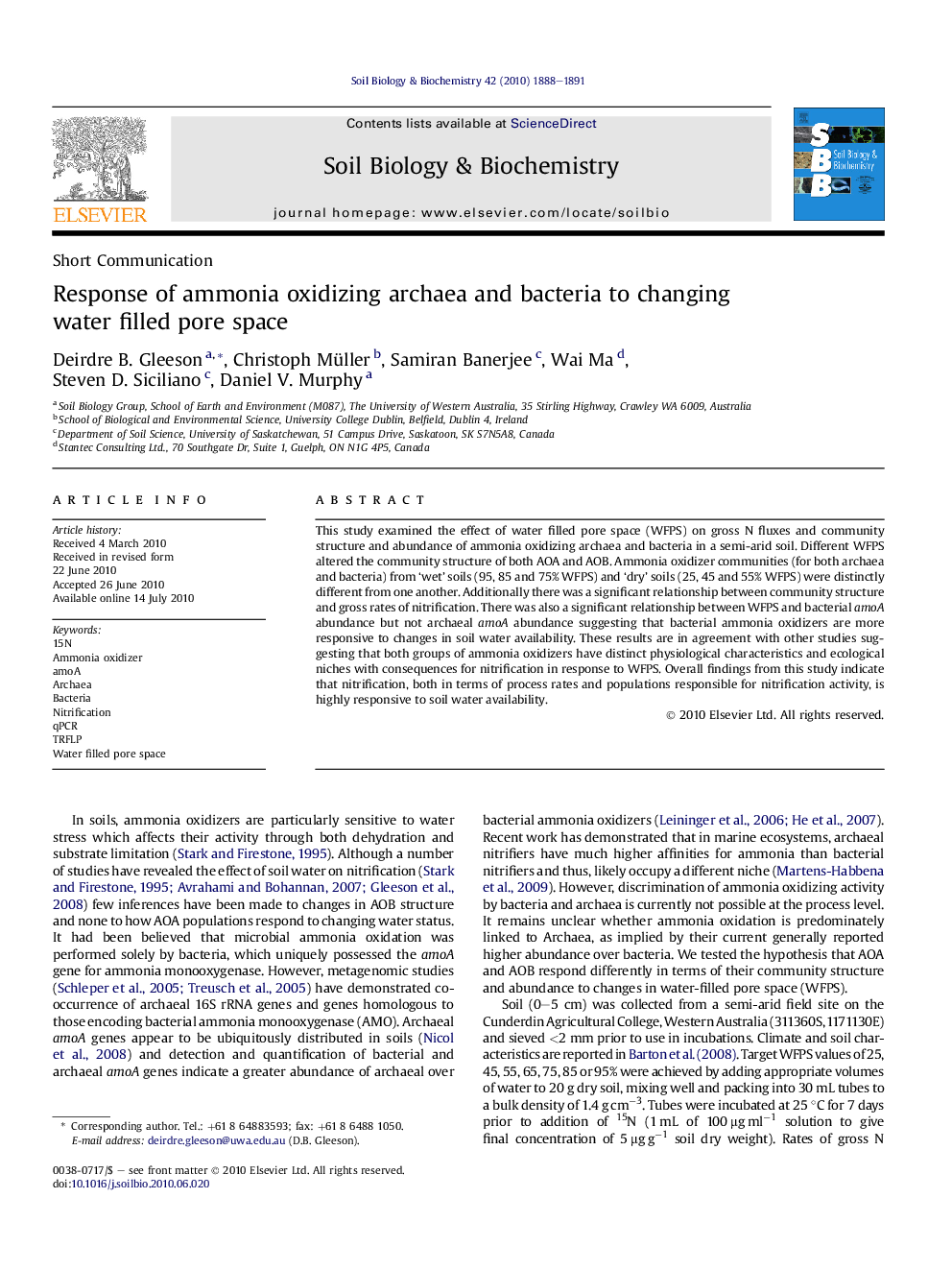| Article ID | Journal | Published Year | Pages | File Type |
|---|---|---|---|---|
| 2025427 | Soil Biology and Biochemistry | 2010 | 4 Pages |
This study examined the effect of water filled pore space (WFPS) on gross N fluxes and community structure and abundance of ammonia oxidizing archaea and bacteria in a semi-arid soil. Different WFPS altered the community structure of both AOA and AOB. Ammonia oxidizer communities (for both archaea and bacteria) from ‘wet’ soils (95, 85 and 75% WFPS) and ‘dry’ soils (25, 45 and 55% WFPS) were distinctly different from one another. Additionally there was a significant relationship between community structure and gross rates of nitrification. There was also a significant relationship between WFPS and bacterial amoA abundance but not archaeal amoA abundance suggesting that bacterial ammonia oxidizers are more responsive to changes in soil water availability. These results are in agreement with other studies suggesting that both groups of ammonia oxidizers have distinct physiological characteristics and ecological niches with consequences for nitrification in response to WFPS. Overall findings from this study indicate that nitrification, both in terms of process rates and populations responsible for nitrification activity, is highly responsive to soil water availability.
